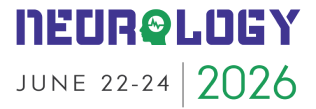Title : The brain mechanism regulating mammalian reproduction
Abstract:
Accumulating evidence suggests that hypothalamic kisspeptin neurons are the master regulator for mammalian reproduction to govern the hypothalamus-pituitary-gonadal (HPG) axis. Indeed, mutation or deletion of kisspeptin gene (Kiss1) or its receptor gene (GPR54) causes hypogonadotropic hypogonadism and then pubertal failure and infertility in humans and rodent models. Kisspeptin neurons are mainly located in two distinct hypothalamic regions, such as anteroventral periventricular nucleus (AVPV)/preoptic nucleus (POA) in the anterior hypothalamus and arcuate nucleus (ARC) in the posterior hypothalamus in mammals. The present paper focuses on the role of AVPV/POA kisspeptin neurons as a gonadotropin-releasing hormone (GnRH) surge generator to trigger ovulation and of the ARC kisspeptin neurons as a GnRH pulse generator to control folliculogenesis/steroidogenesis in mammals. Specifically, kisspeptin neurons in the AVPV in rodents and the POA in ruminants, primates and others are considered to be estrogen positive feedback action site to generate GnRH surge and the consequent luteinizing hormone (LH) surge to stimulate ovulation, because estrogen upregulates AVPV/POA Kiss1 gene expression and activates AVPV/POA kisspeptin neurons. On the other hand, ARC kisspeptin neurons are well accepted to be Responsible for GnRH/gonadotropin pulse generation and consequentfolliculogenesis/steroidogenesis. The ARC kisspeptin neurons are also called as KNDy neurons because of the co-expression of neurokinin B (NKB) and dynorphin A (Dyn). This paper will discuss how stimulatory NKB and inhibitory Dyn generate pulsatile activities of KNDy neurons to generate GnRH/LH pulses by describing our gene-modified rat models. The ARC kisspeptin neurons are considered to be an estrogen negative feedback site, since estrogen downregulates Kiss1 gene expression in the ARC in rodents and other species. This presentation will discuss how the estrogen epigenetically regulates Kiss1 expression in these two populations of kisspeptin neurons. This paper also provides the neuroendocrine mechanism how malnutrition and lactation suppress GnRH/LH pulses through an inhibition of the ARC kisspeptin neurons to understand the malnutritional and lactational anestrus in mammals.
Audience Take Away Notes:
- The audience may be able to use what they learn in this presentation to improve production efficiency in domestic animals.
- The audience may also use the knowledge in this presentation to develop reproductive medicine for humans suffering from reproductive disorders.
- This research will be useful for teaching the latest findings in reproductive science for other faculties




